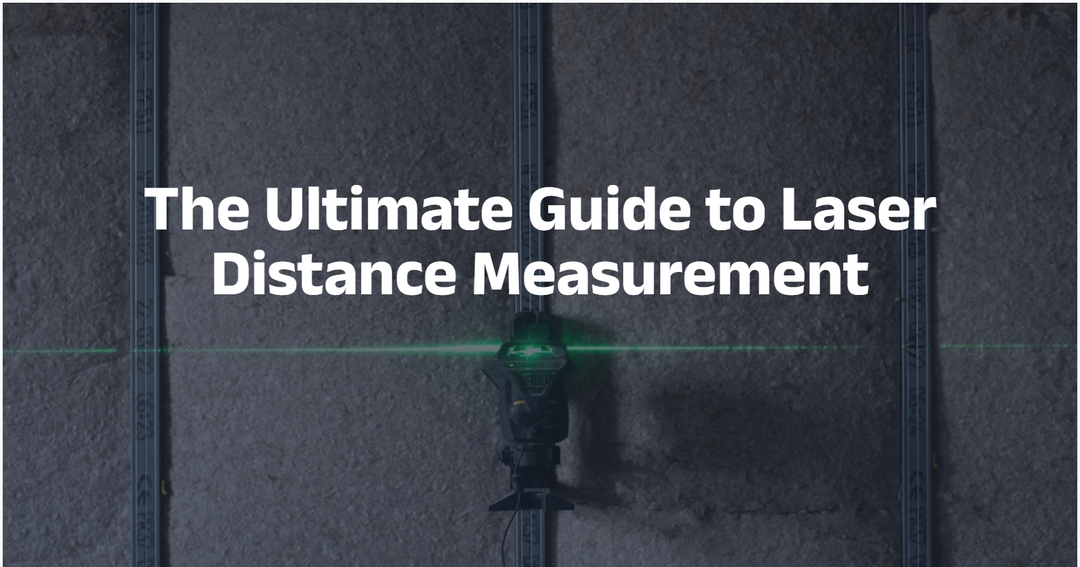How to Use a Stud Finder on Drywall
When it comes to hanging pictures, shelves, or other objects on drywall, finding the studs is essential for providing the necessary support. A stud finder is a valuable tool that can save you time, effort, and potential damage to your walls by quickly and accurately locating studs. With the variety of stud finders and sensors available, it's important to know which one is right for your project and how to use it properly.
In this step-by-step guide, we'll walk you through everything you need to know about using stud finder on drywall. From choosing the right sensor to preparing your stud finder and finding studs in your walls, we've got you covered. Let's get started!
Types of Stud Finders and Sensors
There are three main types of sensors used in stud finders: magnetic, electronic, and beam finders. Each type of sensor works differently, and they all have their pros and cons.
Magnetic stud finders use a magnet to detect metal fasteners or nails in the stud, which then helps locate the edges of the stud. This type of stud finder doesn't require any batteries or calibration and is relatively inexpensive. However, it is less accurate than electronic stud detectors and beam finders.
Electronic stud detectors use sensors to detect changes in density behind the drywall. These changes can indicate the presence of a stud. Electronic stud detectors require batteries, and you need to calibrate them before use. They are more accurate than magnetic stud finders and work well on thicker walls, but they can be affected by other materials like pipes, wires, or insulation.
Beam finders use laser technology to detect the studs. They are the most accurate type of stud finder and can penetrate thicker walls. However, they are also the most expensive type of sensor and can be affected by other materials like pipes, wires, or insulation.
Preparing Your Stud Finder
Before using your stud finder, you need to prepare it by calibrating it and checking the batteries.
To calibrate your stud finder, follow the instructions provided by the manufacturer. Calibration ensures that your sensor is set up to correctly detect studs.
Checking the batteries is also important. Make sure that the batteries are fully charged or replace them if they are running low.
Finding Studs in Drywall
Now that your wall stud finder is ready, it's time to start looking for studs in your drywall.
First, locate an electrical outlet or switch on the wall you want to find the studs in. Electrical boxes are usually attached to a stud, so you can use them to find the edges of the stud.
Place your wall stud finder on the wall, and slowly move it horizontally until it detects a stud. Once the stud detector beeps or flashes, you've located the edge of the stud.
Next, mark the edge of the stud with a pencil or masking tape. Repeat this process on the other side of the stud to locate the other edge.
Finally, mark the center of the stud by measuring the distance between the two edges you've marked and dividing it in half.

Additional Tips and Best Practices
Double-checking stud locations is always a good idea. Use a different type of sensor or method to verify your findings. For example, if you used an electronic stud detector, you can also use a magnetic stud finder to confirm the location of the stud.
Avoiding interference from other materials is also important. Make sure that there are no pipes, wires, or insulation blocking the sensors. Otherwise, you may get false readings.
Using caution when drilling or nailing into studs is crucial to avoid damaging your walls or electrical wires. Always use a stud finder to locate the studs and mark their location before starting your project.
Conclusion
Finding studs in drywall can be a frustrating and time-consuming process without the right tools. A stud finder is a valuable investment for anyone doing DIY projects or professional work. By choosing the right sensor, preparing your stud finder, and following the steps we've outlined, you'll be able to quickly and accurately locate studs in your drywall. Don't wait any longer, buy a noyafa stud finder today and start your next project with confidence!




